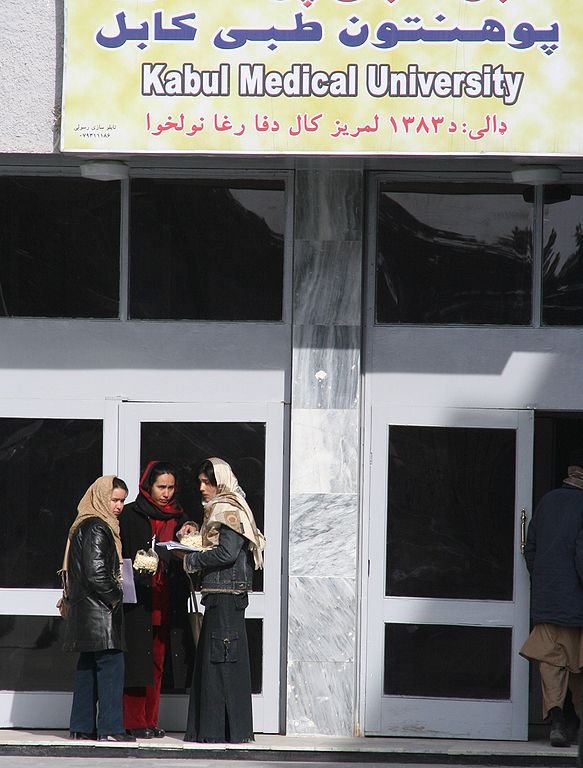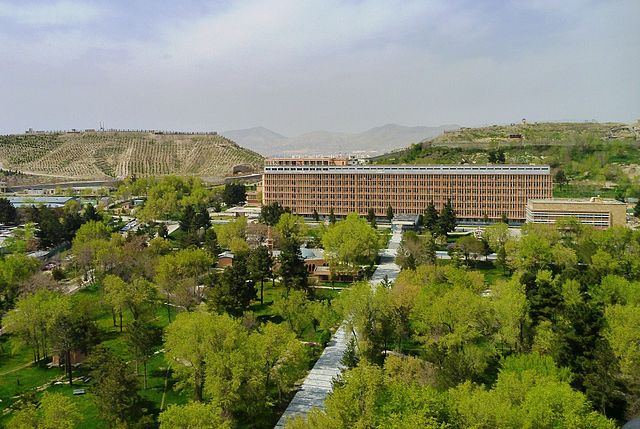
| KABUL
Clockwise from top: A Hindu Kush mountain behind a neighborhood; The Kabul River in a filled state; Abdul Haq Square with large microdistricts in the background; Inside the 16th-century Gardens of Babur; The Abdul Rahman Mosque.
Country
: Afghanistan
Kabul (romanized: Kabol) is the capital and largest city of Afghanistan, located in the eastern section of the country. It is also a municipality, forming part of the greater Kabul Province, and divided into 22 districts. According to estimates in 2020, the population of Kabul is 4.222 million, which includes all the major ethnic groups of Afghanistan. Afghanistan's only city with a population of over 1 million, Kabul serves as its political, cultural and economical center. Rapid urbanization has made Kabul the world's 75th largest city.
Kabul is located high up in a narrow valley between the Hindu Kush mountains, with an elevation of 1,790 metres (5,873 ft) making it one of the highest capitals in the world. The city is said to be over 3,500 years old, mentioned since at least the time of the Achaemenid Empire. Located at crossroads in Asia - roughly halfway between Istanbul in the west and Hanoi in the east - it is in a strategic location along the trade routes of South and Central Asia, and a key location of the ancient Silk Road. It has been part of the Achaemenids followed by the Seleucids, Mauryans, Kushans, Kabul Shahis, Saffarids, Samanids, Ghaznavids, Ghurids, Khwarazmians, Qarlughids, Khaljis, Timurids, Mughals, and Hotaks, until finally becoming part of the Durrani Empire (also known as the "Afghan Empire") in 1747. Kabul became the capital of Afghanistan in 1776, during the reign of Timur Shah Durrani, the son of Ahmad Shah Durrani.
In the early 19th century, the British occupied the city, but after establishing foreign relations, they were compelled to withdraw all forces from Afghanistan. The city was occupied by the Soviets in 1979 but they too abandoned it after the 1988 Geneva Accords were signed. A civil war in the 1990s between various rebel groups destroyed much of the city, resulting in many casualties. From late 2001 the city has been continuously rebuilt.
Kabul is known for its gardens, bazaars, and palaces, well known examples being the Gardens of Babur and Darul Aman Palace. It was also formerly a mecca for young western hippies. Despite frequent terrorist attacks in the city, mainly by Taliban insurgents, the city continues to develop and was the fifth fastest-growing city in the world as of 2012.
Toponymy
:
History
:
The Kabul valley was part of the Median Empire (c. 678-549 BC). In 549 BC, the Median Empire was annexed by Cyrus The Great and Kabul became part the Achaemenid Empire (c. 550–330 BC). During that period, Kabul became a center of learning for Zoroastrianism, followed by Buddhism. An inscription on Darius the Great's tombstone lists Kabul as one of the 29 countries of the Achaemenid Empire.
Kushan Empire When Alexander annexed the Achaemenid Empire, the Kabul region came under his control. After his death, his empire was seized by his general Seleucus, becoming part of the Seleucid Empire. In 305 BCE, the Seleucid Empire was extended to the Indus river which led to friction with the neighboring Mauryan Empire, but it is widely believed that the two empires reached an alliance treaty.
During the Mauryan period, trade flourished because of uniform weights and measures. Irrigation facilities for public use were developed leading to an increased harvest of crops. People were also employed as artisans, jewelers, carpenters.
The Greco-Bactrians took control of Kabul from the Mauryans in the early 2nd century BC, then lost the city to their subordinates in the Indo-Greek Kingdom around the mid-2nd century BC. Buddhism was greatly patronized by the rulers and majority of people of the city were adherents of the religion. Indo-Scythians expelled the Indo-Greeks by the mid 1st century BC, but lost the city to the Kushan Empire about 100 years later.
Some historians ascribe Kabul the Sanskrit name of Kamboj (Kamboj). It is mentioned as Kophes or Kophene in some classical writings. Hsuan Tsang refers to the city as Kaofu in the 7th century AD, which is the appellation of one of the five tribes of the Yuezhi who had migrated from across the Hindu Kush into the Kabul valley around the beginning of the Christian era. It was conquered by Kushan Emperor Kujula Kadphises in about 45 AD and remained Kushan territory until at least the 3rd century AD. The Kushans were Indo-European-speaking peoples based in Bactria (northern Afghanistan).
Around 230 AD, the Kushans were defeated by the Sassanid Empire and replaced by Sassanid vassals known as the Indo-Sassanids. During the Sassanian period, the city was referred to as "Kapul" in Pahlavi scripts. Kapol in the Persian language means Royal (ka) Bridge (pol), which is due to the main bridge on the Kabul River that connected the east and west of the city. In 420 AD the Indo-Sassanids were driven out of Afghanistan by the Xionite tribe known as the Kidarites, who were then replaced in the 460s by the Hephthalites. It became part of the surviving Turk Shahi Kingdom of Kapisa, also known as Kabul-Shahan. According to Táríkhu-l Hind by Al-Biruni, Kabul was governed by princes of Turkic lineage whose rule lasted for about 60 generations.
—
Abu Rayhan Biruni, 978–1048 AD
Islamization and Mongol invasion :
The Islamic conquest reached modern-day Afghanistan in 642 AD, at
a time when Kabul was independent. A number of failed expeditions
were made to Islamize the region. In one of them, Abdur Rahman bin
Samana arrived to Kabul from Zaranj in the late 600s and converted
12,000 inhabitants to Islam before abandoning the city. Muslims
were a minority until Ya'qub bin Laith as-Saffar of Zaranj conquered
Kabul in 870 and established the first Islamic dynasty in the region.
It was reported that the rulers of Kabul were Muslims with non-Muslims
living close by.
—
Istahkrí, 921 AD
Following
the era of the Khalji dynasty in 1333, the famous Moroccan scholar
Ibn Battuta was visiting Kabul and wrote:
—
Ibn Battuta, 1304–1369 AD
Old painting showing the Great Wall of Kabul In
the 14th century, Kabul became a major trading center under the
kingdom of Timur (Tamerlane). In 1504, the city fell to Babur from
the north and made into his headquarters, which became one of the
principal cities of his later Mughal Empire. In 1525, Babur described
Kabulistan in his memoirs by writing that:
—
Baburnama, 1525
Durrani Empire :
Chihil Sutun Palace (also known as "Hindaki"), the Emir's residence, built in the 19th century Nine years after Nader Shah and his forces invaded and occupied the city as part of the more easternmost parts of his Empire, he was assassinated by his own officers, causing the rapid disintegration of it. Ahmad Shah Durrani, commander of 4,000 Abdali Afghans, asserted Pashtun rule in 1747 and further expanded his new Afghan Empire. His ascension to power marked the beginning of Afghanistan. His son Timur Shah Durrani, after inheriting power, transferred the capital of Afghanistan from Kandahar to Kabul in 1776, and used Peshawar in what is today Pakistan as the winter capital. Timur Shah died in 1793 and was succeeded by his son Zaman Shah Durrani. Kabul's first visitor from Europe was Englishman George Forster, who described 18th-century Kabul as "the best and cleanest city in Asia".
In 1826, the kingdom was claimed by Dost Mohammad Khan but in 1839 Shujah Shah Durrani was re-installed with the help of British India during the First Anglo-Afghan War. In 1841 a local uprising resulted in the killing of the British resident and loss of mission in Kabul and the 1842 retreat from Kabul to Jalalabad. In 1842 the British returned to Kabul, plundering Bala Hissar in revenge before fleeing back to British India (now Pakistan). Akbar Khan took to the throne from 1842 to 1845 and was followed by Dost Mohammad Khan.
The British-led Indian forces invaded in 1879 when Kabul was under Sher Ali Khan's rule, as the Afghan king initially refused to accept British diplomatic mission and later the British residents were again massacred. The British partially destroyed Bala Hissar fortress before retreating to British India.
20th
century :
Kabul modernized throughout the regime of King Habibullah Khan, with the introduction of electricity, telephone, and a postal service. The first modern high school, Habibia, was established in 1903. In 1919, after the Third Anglo-Afghan War, King Amanullah Khan announced Afghanistan's independence in foreign affairs at Eidgah Mosque in Kabul. Amanullah was reform-minded and he had a plan to build a new capital city on land about 6 km away from Kabul. This area was named Darulaman and it consisted of the famous Darul Aman Palace, where he later resided. Many educational institutions were founded in Kabul during the 1920s. In 1929 King Ammanullah left Kabul due to a local uprising orchestrated by Habibullah Kalakani, but he himself was imprisoned and executed after nine months in power by King Nader Khan. Three years later, in 1933, the new king was assassinated during an award ceremony inside a school in Kabul. The throne was left to his 19-year-old son, Zahir Shah, who became the last King of Afghanistan. Unlike Amanullah Khan, Nader Khan and Zahir Shah had no plans to create a new capital city, and thus Kabul remained the country's seat of government.
The famous Darul Aman Palace, built under King Amanullah Khan as part of an incompleted new capital city
Serena Hotel, opened 1945 During the inter-war period France and Germany helped develop the country and maintained high schools and lycees in the capital, providing education for the children of the city's elite families. Kabul University opened in 1932 and by the 1960s western educated Afghans made up the majority of teachers. By the 1960s the majority of instructors at the university had degrees from Western universities.
When Zahir Shah took power in 1933 Kabul had the only 10 kilometers (6 miles) of rail in the country and the country had few internal telegraphs, phone lines or roads. Zahir turned to the Japanese, Germans and Italians for help developing a modern transportation and communication network. A radio tower built by the Germans in 1937 in Kabul allowing instant communication with outlying villages. A national bank and state cartels were organized to allow for economic modernization. Textile mills, power plants, carpet and furniture factories were also built in Kabul, providing much needed manufacturing and infrastructure.
During the 1940s and 1950s, urbanization accelerated and the built-up area was increased to 68 km2 by 1962, an almost fourteen-fold increase compared to 1925. Under the premiership of Mohammad Daoud Khan in the 1950s, foreign investment and development increased. In 1955, the Soviet Union forwarded $100 million in credit to Afghanistan, which financed public transportation, airports, a cement factory, mechanized bakery, a five-lane highway from Kabul to the Soviet border and dams, including the Salang Pass to the north of Kabul. During the 1960s, Soviet-style microrayon housing estates were built, containing sixty blocks. The government also built many ministry buildings in the brutalist architecture style.
Men and women entering a public transport bus in the 1950s In the 1960s the first Marks & Spencer store in Central Asia was built in the city. Kabul Zoo was inaugurated in 1967, which was maintained with the help of visiting German zoologists. Foreigners flocked to Kabul and the nation's tourism industry picked up speed. Kabul experimented with liberalization, notably the loosening of restrictions on speech and assembly which led to student politics in the capital. Socialist, Maoist and liberal factions demonstrated daily in Kabul while more traditional Islamic leaders spoke out against the failure to aid the Afghan countryside. From the 1960s until the late 1970s, Kabul was a major stop on the famous Hippie trail. By the beginning of the 1970s, Kabul became known for its street sales of hashish and became a major tourist attraction for western hippies.
Flats in "Old Mikrorayon", one of the city's Soviet-style microdistricts built between the 1960s and 1980s Soviet occupation, civil war and Taliban rule :
Center of Kabul in 1979; the Pul-e Khishti bridge crosses the Kabul River to the old city in the south bank On April 28, 1978, President Daoud and most of his family were assassinated in Kabul's Presidential Palace in what is called the Saur Revolution. Pro-Soviet PDPA under Nur Muhammad Taraki seized power and slowly began to institute reforms. Private businesses were nationalized in the Soviet manner. Education was modified into the Soviet model, with lessons focusing on teaching Russian, Marxism–Leninism and learning of other countries belonging to the Soviet bloc.
On December 24, 1979, the Soviet Union invaded Afghanistan and Kabul was heavily occupied by Soviet Armed Forces. In Pakistan, Director-General of the ISI Akhtar Abdur Rahman advocated for the idea of covert operation in Afghanistan by arming Islamic extremists who formed the mujahideen. General Rahman was heard loudly saying: "Kabul must burn! Kabul must burn!", and mastered the idea of proxy war in Afghanistan. Pakistani President Zia-ul-Haq authorized this operation under General Rahman, which was later merged with Operation Cyclone, a programme funded by the United States and carried out by the Central Intelligence Agency. Large protests against the Soviet presence broke out in Kabul in 1980 in what is called the 3 Hut uprising.
Tajbeg Palace in 1987, the Soviet Army headquarters during the Soviet–Afghan War The Soviets turned the city of Kabul into their command center during the Soviet–Afghan War, though the city was considered moderately safe during that period since fighting was mostly taking place in the countryside. However political crime such as assassinations of PDPA party members or guerrilla attacks on military and government targets were quite common. The Soviet Embassy, for example, was attacked four times with arms fire in the first five years of the war. A Western correspondent revisiting Kabul in December 1983 after a year, said that the city was "converted into a fortress bristling with weapons". Contrastingly, that same year American diplomat Charles Dunbar commented that the Soviet troops' presence was "surprisingly modest", and an author in a 1983 Bulletin of the Atomic Scientists article thought that the Soviet soldiers had a "friendly" atmosphere.
The city's population increased from around 500,000 in 1978 to 1.5 million in 1988. The large influx were mostly internal refugees who fled other parts of the country for safety in Kabul. During this time, women made up 40% of the workforce. Soviet men and women were very common in the city's shopping roads, with the large availability of Western products. Most Soviet civilians (numbering between 8,000 and 10,000) lived in the north eastern Soviet-style Mikrorayon (microraion) housing complex that was surrounded by barbed-wire and armed tanks. They sometimes received abuse from anti-Soviet civilians on the streets. The mujahideen rebels managed to strike at the city a few times—on October 9, 1987, a car bomb planted by a mujahideen group killed 27 people, and on April 27, 1988 in celebrations of the 10th anniversary of the Saur Revolution, a truck bomb killed six people.
Kabul's Jadayi Maiwand in 1993 during the civil war After the fall of Mohammad Najibullah's government in April 1992, different mujahideen factions entered the city and formed a government under the Peshawar Accords, but Gulbuddin Hekmatyar's party refused to sign the accords and started shelling the city for power, which soon escalated into a full-scale conflict. This marked the start of a dark period of the city: at least 30,000 civilians were killed in a period known locally as the "Kabul Wars." About 80 percent of the city was devastated and destroyed by 1996. The old city and western areas were among the worst-hit. A The New York Times analyst said in 1996 that the city was more devastated than Sarajevo, which was similarly damaged during the Bosnian War at the time.
The city suffered heavily under a bombardment campaign between rival militias which intensified during the summer of 1992. Its geographic location in a narrow valley made it an easy target from rockets fired by militias who based themselves in the surrounding mountains. Within two years' time, the majority of infrastructure was destroyed, a massive exodus of the population left to the countryside or abroad, and electricity and water was completely out. In late 1994, bombardment of the capital came to a temporary halt. These forces took steps to restore law and order. Courts started to work again, convicting individuals inside government troops who had committed crimes. On September 27, 1996, the hardline Taliban militia seized Kabul and established the Islamic Emirate of Afghanistan. They imposed a strict form of Sharia (Islamic law), restricting women from work and education, conducting amputations against common thieves, and hit-squads from the infamous "Ministry for Promotion of Virtue and Prevention of Vice" watching public beatings of people.
21st century :
In November 2001, the Northern Alliance captured Kabul after the Taliban had abandoned it following the American invasion. A month later a new government under President Hamid Karzai began to assemble. In the meantime, a NATO-led International Security Assistance Force (ISAF) was deployed in Afghanistan. The war-torn city began to see some positive development as many expatriate Afghans returned to the country. The city's population grew from about 500,000 in 2001 to over 3 million in recent years. Many foreign embassies re-opened, and the city has been recovering ever since. In 2008 the process started to gradually hand over security responsibilities from NATO to Afghan forces.
As of 2014, the Afghan National Security Forces (ANSF) have been in charge of security in and around the city. Kabul is periodically the scene of deadly bombings carried out mostly by the Taliban but also by the Haqqani network, ISIL, and other anti-state groups. Government employees, soldiers and ordinary civilians have all been targets of attacks. The Afghan government called the actions of the terrorists war crimes. The deadliest attack yet was a truck bombing in May 2017. Since 2010, a series of manned checkpoints called the Ring of Steel operates in the city.
The city has experienced rapid urbanization with an increasing population. Many informal settlements have been built. Since the late 2000s, numerous modern housing complexes have been built, many of which are gated and secured, to serve a growing Afghan middle class. Some of these include the Aria City (in District 10) and Golden City (District 8). Some complexes have been built out-of-town, such as the Omid-e-Sabz township (District 13), Qasaba/Khwaja Rawash township (District 15), and Sayed Jamaludin township (District 12).
A major ambitious $80 billion project called "Kabul New City" aims to develop a large modern township of homes and businesses on 1,700 acres of land to the north of Kabul (Districts 18 and 19) and Bagram in Parwan Province. The project was first conceptualized in 2007 and approved in 2009. After years in planning and assistance from the Japanese government, construction started in 2015.
On 12 May 2020, three gunmen wearing police uniforms carried out a mass shooting in the maternity ward of Dashte Barchi hospital in Kabul, which is assisted by Médecins Sans Frontières (Doctors Without Borders) personnel. The attackers killed 24 people and injured another 16. The deaths included two newborn babies, one midwife, and 16 mothers, who were either pregnant giving birth or were with their newborns. Three of the mothers were shot and killed in the delivery room along with their unborn babies. The gunmen had walked straight past other wards closer to the hospital's entrance, and attacked only the maternity ward. More than 80 women, infants, and staff, including three foreign nationals, were safely evacuated from the hospital, and all of the attackers were killed by the Afghan security forces. No armed group claimed responsibility for the hospital shooting. The U.S. government said that it had assessed that ISIL–KP was responsible for the attack. The Afghan government, however, claimed that the Taliban and the affiliated Haqqani network were behind the attack.
Geography :
Qargha dam and lake
A view of some of the mountains that surround Kabul Kabul is situated in the eastern part of the country, 1,791 meters (5,876 feet) above sea level in a narrow valley, wedged between the Hindu Kush mountains along the Kabul River. Immediately to the south of the old city are the ancient city walls and the Sher Darwaza mountain, with the Shuhadayi Salihin cemetery behind it. A bit further east is the ancient Bala Hissar fortress with the Kol-e Hasmat Khan lake behind it.
Its location has been described as a "bowl surrounded by mountains". Some of the mountains (which are called koh) include: Khair Khana-e Shamali, Khwaja Rawash, Shakhi Baran Tey, Chihil Sutun, Qurugh, Khwaja Razaq and Sher Darwaza. There are also two mountains in between urban areas in western Kabul: Asamayi (also known as the Television hill) and Ali Abad. Hills within the city (which are called tapa) include Bibi Mahro and Maranjan.
The city covers an area size of 1,023 square kilometres (395 sq mi), making it by far the largest in the country. The closest foreign capital cities as the bird flies are Islamabad, Dushanbe, Tashkent, New Delhi and Bishkek. Kabul is roughly equidistant between Istanbul (western Asia) and Hanoi (eastern Asia).
Climate
:
Environment
:
A large lake and wetland is located just to the southeast from the old city called Kol-e Hashmat Khan. The marsh provides a critical resting place to thousands of birds who fly between the Indian subcontinent and Siberia. In 2017 the government declared the lake a protected area. Some rare species of birds have been spotted at the lake, such as the Eastern imperial eagle and the Dalmatian pelican. Kabul's other large lake is Qargha, located some 9 km northwest from the center. It is a major attraction for locals as well as foreigners.
Air pollution is a major problem in the city during the winter season, when many residents burn low-quality fuels.
Districts :
Location of Kabul Municipality within Kabul Province The city of Kabul forms one of the 15 districts of Kabul Province. As the provincial capital, it forms a municipality (sharwali) which is further divided into 22 administrative districts called municipal districts or city districts (nahia), which coincide with the official Police Districts (PD). The number of city districts increased from 11 to 18 in 2005, and then to 22 by 2010 after the incorporation of Districts 14 and 19-22 which were annexed by Kabul Municipality from surrounding rural districts. The city limits have thus substantially increased. Due to demarcation disputes with the provincial administration, some of these new districts are more administered by the provincial districts than the municipality.
District 1 contains most of the old city. Downtown Kabul mostly consist of Districts 2, 4 and 10. In addition, Districts 3 and 6 house many commercial and governmental points of interests. The city's north and west are the most urbanized, as opposed to the south and east.
The
table below show the 22 city districts and their settlements, with
information about its land size and usage, accurate as of 2011.
The old part of Kabul is filled with bazaars nestled along its narrow, crooked streets. Cultural sites include: the National Museum of Afghanistan, notably displaying an impressive statue of Surya excavated at Khair Khana, the ruined Darul Aman Palace, the tomb of Mughal Emperor Babur at Bagh-e Babur, and Chihil Sutun Park, the Minar-i-Istiqlal (Column of Independence) built in 1919 after the Third Afghan War, the tomb of Timur Shah Durrani, the Bagh-e Bala Palace and the imposing Id Gah Mosque (founded 1893). Bala Hissar is a fort destroyed by the British in 1879, in retaliation for the death of their envoy, now restored as a military college. There are also the Kolola Pushta fort, which is still garrisoned by the Afghan Army, and the nearby 19th-century Shahrara Tower fort, which was ruined in 1928. The Minaret of Chakari, destroyed in 1998, had Buddhist swastika and both Mahayana and Theravada qualities.
Other places of interest include Kabul City Center, which is Kabul's first shopping mall, the shops around Flower Street and Chicken Street, Wazir Akbar Khan district, Kabul Golf Club, Kabul Zoo, Abdul Rahman Mosque, Shah-Do Shamshira and other famous mosques, the National Gallery of Afghanistan, the National Archives of Afghanistan, Afghan Royal Family Mausoleum, the OMAR Mine Museum, Bibi Mahro Hill, Kabul Cemetery, and Paghman Gardens. The Aga Khan Development Network (AKDN) was also involved in the restoration of the Bagh-e Babur (Babur Gardens).
Tappe-i-Maranjan is a nearby hill where Buddhist statues and Graeco-Bactrian coins from the 2nd century BC have been found. Outside the city proper is a citadel and the royal palace. Paghman and Jalalabad are interesting valleys west and east of the city.
National Museum of Afghanistan
National Gallery of Afghanistan
Hotel Inter-Continental
Parks :
Looking towards a neighborhood from the hill in Wazir Akbar Khan
Aerial view towards the Bagh-e Bala Palace and the gardens surrounding it
View from the Bagh-e Babur (Gardens of Babur)
16th-century mosque inside the Gardens of Babur
The Paghman arc de triomphe
The Kabul Bird Market (Ka Foroshi)
Shah-Do Shamshira Mosque
Bibi Mahro park Demographics :
Kabul's population was estimated in 2020 at about 4.222 million. Another 2015 estimate has put it at 3,678,034. The city's population has long fluctuated due to the wars. The lack of an up-to-date census means that there are various estimates of the population.
Kabul's population is estimated to have been about 10,000 in 1700, 65,000 by 1878, and 120,000 by 1940. More recently, the population was around 500,000 in 1979, whilst another source claims 337,715 as of 1976. This figure rose to about 1.5 million by 1988, before dramatically dropping in the 1990s. Kabul became one of the fastest growing cities in the world, with its population growing fourfold from 2001 to 2014. This was partly due to the return of refugees after the fall of the Taliban regime, and partly due to Afghans moving from other provinces mainly due to war between Taliban insurgents and Afghan government forces in their native areas as well as looking for labor. This resulting rapid urbanization mean that many residents today live in informal settlements. Shanty mud-brick homes on the mountainsides and steep hills have been built by them and these are usually poverty-stricken, not connected to the water and electricity grid. Although the settlements are illegal, they have been tolerated by authorities. In 2017 Kabul Municipality started a project to paint the homes in these settlements in bright colors in an effort to "cheer up" residents.
Houses built on mountains Kabul is the most ethnically diverse city in the country, with the population including Afghans from all over the country. A 2009 report states that Kabul has large populations of all major ethnic groups, including Tajiks and Hazaras as well as Pashtuns in pockets throughout, and smaller communities of Uzbeks and other groups. The Dari (Persian) and Pashto languages are widely used in the region, although Dari serves as the lingua franca. Multilingualism is common throughout the area, particularly among the Pashtun people.
The term "Kabuli" is referred to the urbanites of the city. They are ethnic-neutral, typically speak Dari (Persian), are generally secularly educated, and favor Western fashion. Many Kabulites (especially elites and the upper class) left the country during the civil war and are now outnumbered by rural people who moved in from the countryside, mostly refugees but also labor-seekers.
About 74% of the city's population follow Sunni Islam while 25% are Shiites (mainly the Hazaras and Qizilbash). The remaining 1% are followers of Sikhism and Hinduism, as well as one known Christian resident (First Lady Rula Ghani) and one Jewish resident (Zablon Simintov); other known Christians and Jews exist though are not Afghan nationals and are generally workers at international organizations rather than permanent residents. Kabul also has small Indian (which the Sikhs and Hindus belong to) and Turkish communities (mostly business-owners and investors), and in the 1980s had a sizable Russian community during the Soviet campaign in the country.
Sports :
Ghazi Stadium Cricket is the dominant sport in Kabul with 2 of the 3 sports stadiums reserved for cricket.
Sports
complexes :
Arg, the Presidential Palace in Kabul The municipality's administrative structure consists of 17 departments under a mayor. Like other provincial municipalities in Afghanistan, the municipality of Kabul deals with city affairs such as construction and infrastructure. The city districts (nahia) collect certain taxes and issue building licenses. Each city district has a district head appointed by the mayor, and leads six major departments in the district office. The neighborhood organization structure at the nahia level is called a gozar. A wakil-e gozar is a person chosen to represent a community within a city district.
Kabul's Chief of Police is Lt. Gen. Abdul Rahman Rahimi. The police are part of the Afghan National Police (ANP) under the Ministry of Interior and are arranged by city districts. The Police Chief is selected by the Interior Minister and is responsible for all law enforcement activities throughout the Kabul province.
Economy and infrastructure :
Dry food in one of Kabul's markets Kabul's main products include fresh and dried fruit, nuts, beverages, Afghan rugs, leather and sheep skin products, furniture, antique replicas, and domestic clothes. The World Bank authorized US$25 million for the Kabul Urban Reconstruction Project which closed in 2011. Over the last decade, the United States has invested approximately $9.1 billion into urban infrastructure in Afghanistan. The wars since 1978 have limited the city's economic productivity but after the establishment of the Karzai administration since late 2001, local economic developments have included a number of indoor shopping malls. The first of these was the Kabul City Center, opened 2005. Others have also opened in recent years including Gulbahar Center, City Walk Mall and Majid Mall.
Kabul's largest industrial hub is located in District 9, on the north banks of the River Kabul and near the airport. About 6 km (4 mi) from downtown Kabul, in Bagrami, a 9-hectare (22-acre) industrial complex has completed with modern facilities, which will allow companies to operate businesses there. The park has professional management for the daily maintenance of public roads, internal streets, common areas, parking areas, 24 hours perimeter security, access control for vehicles and persons. A number of factories operate there, including the $25 million Coca-Cola bottling plant and the Omaid Bahar juice factory.
Inside an antiquity shop in Kabul's famous Chicken Street (Kochi Murgha) According to Transparency International, the government of Afghanistan was the third most-corrupt in the world, as of 2010. Experts believe that the poor decisions of Afghan politicians contribute to the unrest in the region. This also prevents foreign investment in Afghanistan, especially by Western countries. In 2012, there were reportedly $3.9 billion paid to public officials in bribes which contributed to these issues.
Da Afghanistan Bank, the nation's central bank, is headquartered in Kabul. In addition, there are several commercial banks in the city.
Development
planning :
An initial concept design called the City of Light Development, envisioned by Dr. Hisham N. Ashkouri, for the development and the implementation of a privately based investment enterprise has been proposed for multi-function commercial, historic and cultural development within the limits of the Old City of Kabul, along the southern side of the Kabul River and along Jade Meywand Avenue.
Communications :
As of November 2015, there are more than 24 television stations based out of Kabul.
In Kabul, Minister Amir Zai Sangin of the Ministry of Communications and Information Technology maintains statistics regarding telecommunications in the Islamic Republic of Afghanistan. Afghanistan Information Management Services (AIMS) provides software development, capacity development, information management, and project management services to the Afghan Government and other NGOs, thereby supporting their on-the-ground activities.
GSM/GPRS mobile phone services in the city are provided by Afghan Wireless, Etisalat, Roshan, MTN and Salaam. As of 2012, all of them provide 3G services as well. In November 2006, the Afghan Ministry of Communications signed a $64.5 million US dollar deal with ZTE on the establishment of a countrywide fibre optical cable network to help improve telephone, internet, television and radio broadcast services not just in Kabul but throughout the country. Internet cafes were introduced in 2002 and has been expanding throughout the country. As of 2012, 3G services are also available.
There are a number of post offices throughout the city. Package delivery services like FedEx, TNT N.V., and DHL are also available.
Transportation :
Air :
Rail
:
Road :
Traffic in Kabul city center in 2013 The AH76 highway (or Kabul-Charikar Highway) connects Kabul north towards Charikar, Pol-e Khomri and Mazar-i-Sharif (310 km (190 mi) away), with leading roads to Kunduz (250 km (160 mi) away). The AH77 highway goes west towards Bamiyan Province (150 km (93 mi) away) and Chaghcharan in the central mountains of Afghanistan. To the south-west, the Kabul-Ghazni Highway goes to Ghazni (130 km (81 mi) away) and Kandahar (460 km (290 mi) away). To the south, the Kabul-Gardez Highway connects it to Gardez (100 km (62 mi) away) and Khost. To the east, the Kabul-Jalalabad Highway goes to Jalalabad (120 km (75 mi) away) and across the border to Peshawar.
View towards Kabul in June 1976 Much of the road network in downtown Kabul consist of square or circle intersections (char-rahi). The main square in the city is Pashtunistan Square (named after Pashtunistan), which has a large fountain in it and is located adjacent to the presidential palace, the Central Bank, and other landmarks. The Massoud Circle is located by the U.S. Embassy and has the road leading to the airport. In the old city, Sar-e Chawk roundabout is at the center of Maiwand Road (Jadayi Maiwand). Once all roads led to it, and in the 16th century was called the "navel of Kabul". In the Shahr-e Naw district there are several major intersections: Ansari, Haji Yaqub, Quwayi Markaz, Sedarat, and Turabaz Khan. The latter, named after Turabaz Khan, connect Flower Street and Chicken Street. There are also two major intersections in western Kabul: the Deh Mazang Circle and Kote Sangi. Salang Watt is the main road to the north-west, whereas Asamayi Watt and Seh Aqrab (also called Sevom Aqrab) is the main road to western Kabul.
The steep population rise in the 21st century has caused major congestion problems for the city's roads. In efforts to tackle this issue, a 95 km outer ring road costing $110 million was approved in 2017. Construction will take five years and it will run from Char Asiab via Ahmad Shah Baba Mina, Deh Sabz ("Kabul New City" development area), the AH76 highway, Paghman and back to Char Asyab. A new bus public transport service is also planned to be opened in 2018 (see below). In September 2017, the head of the Kabul Municipality announced that 286 meters of pedestrian overpass footbridges will be built in eight busy areas "in the near future".
Under the Kabul Urban Transport Efficiency Improvement Project that was signed in 2014 and backed by the World Bank, the city has seen widespread improvements in road conditions, including the building of new pedestrian sidewalks, drainage systems, lighting and asphalted road surfaces. The project runs until December 31, 2019.
A Toyota Corolla (E100) at a security checkpoint in 2010 Private vehicles have been on the rise in Kabul since 2002, with about 700,000 cars registered as of 2013 and up to 80% of the cars reported to be Toyota Corollas. The number of dealerships have also increased from 77 in 2003 to over 550 by 2010. Gas stations are mainly private-owned. Bicycles on the road are a common sight in the city.
Taxis
:
Buses
and trolleybuses :
An electric trolleybus system operated in Kabul from February 1979 to 1992 using Škoda fleet built by a Czechoslovak company (see Trolleybuses in Kabul for more). The trolleybus service was highly popular mainly due to its low price compared to the Millie Bus conventional bus service. The last trolleybus came to a halt in late 1992 due to warfare - much of the copper overhead wires were later looted but a few of them, including the steel poles, can still be seen in Kabul today.
In June 2017 Kabul Municipality unveiled plans for a new bus rapid transit system, the first major urban public transportation scheme. It was expected to open by 2018, but its launch has been delayed.
Education :
The Ministry of Education led by Ghulam Farooq Wardak is responsible for the education system in Afghanistan. Public and private schools in the city have reopened since 2002 after they were shut down or destroyed during fighting in the 1980s to the late 1990s. Boys and girls are strongly encouraged to attend school under the Karzai administration but many more schools are needed not only in Kabul but throughout the country. The Afghan Ministry of Education has plans to build more schools in the coming years so that education is provided to all citizens of the country.
High schools in Kabul include :
•
Habibia High
School, a British-Afghan school founded in 1903 by King Habibullah
Khan
•
American university
of Afghanistan
Sardar Mohammad Daud Khan Hospital •
Jinnah Hospital
Source :
https://en.wikipedia.org/ |


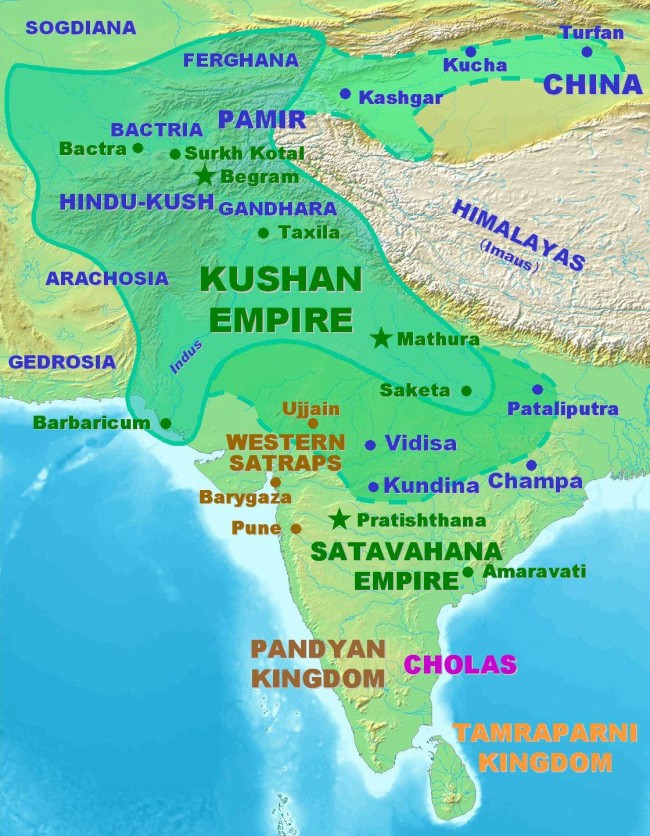
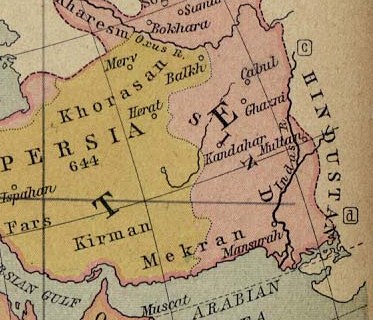
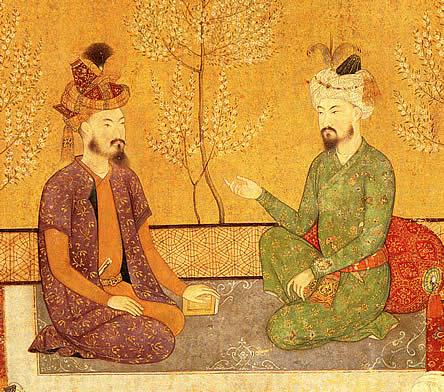
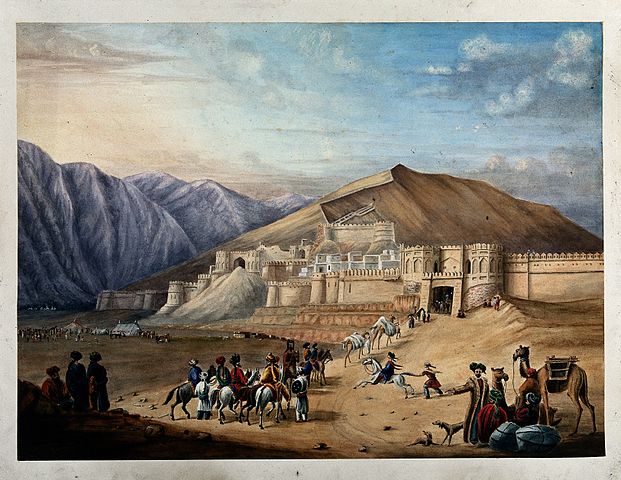

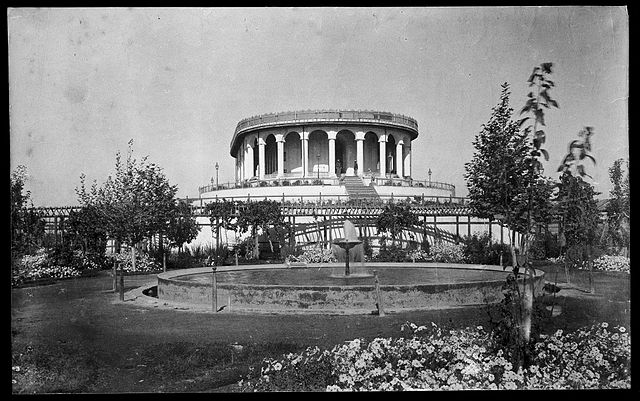
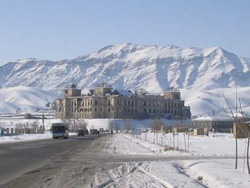
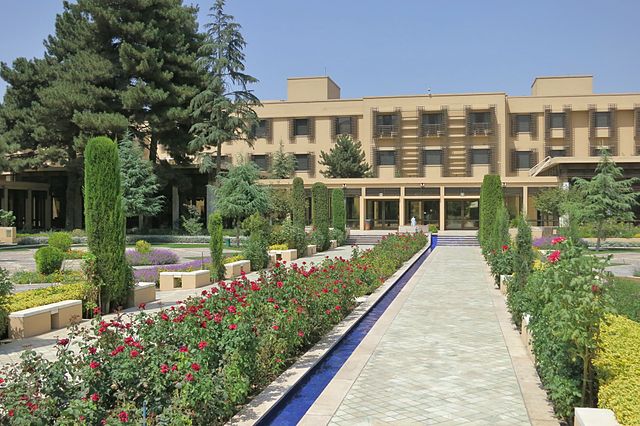
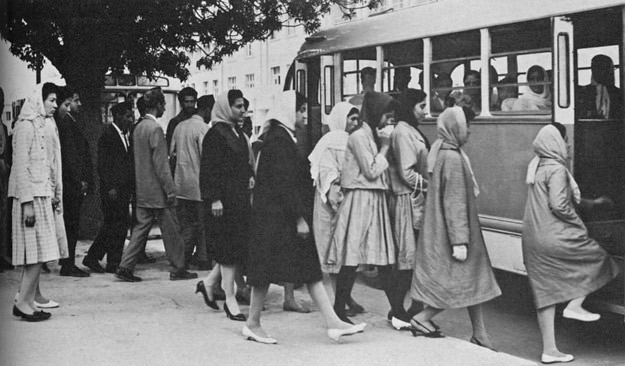
.jpg)
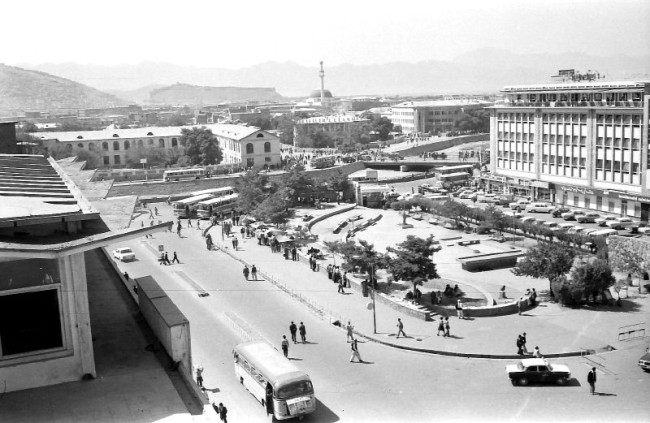
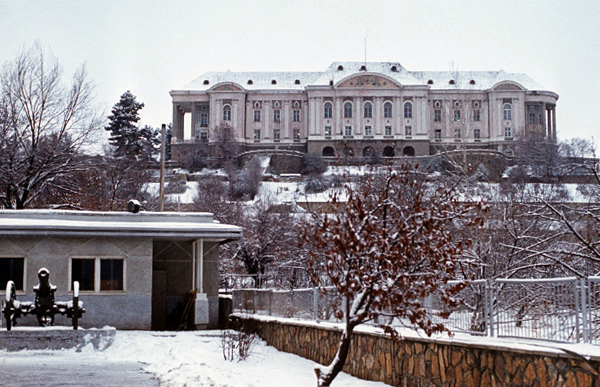



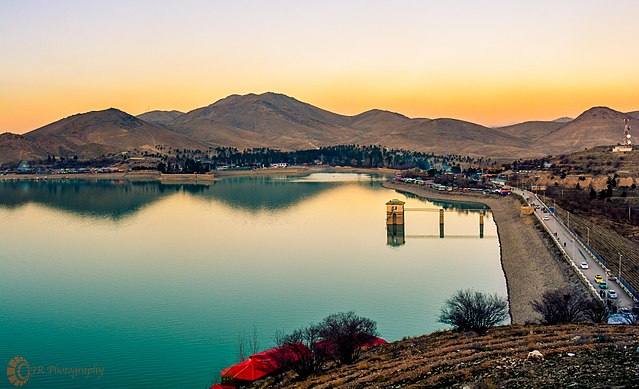
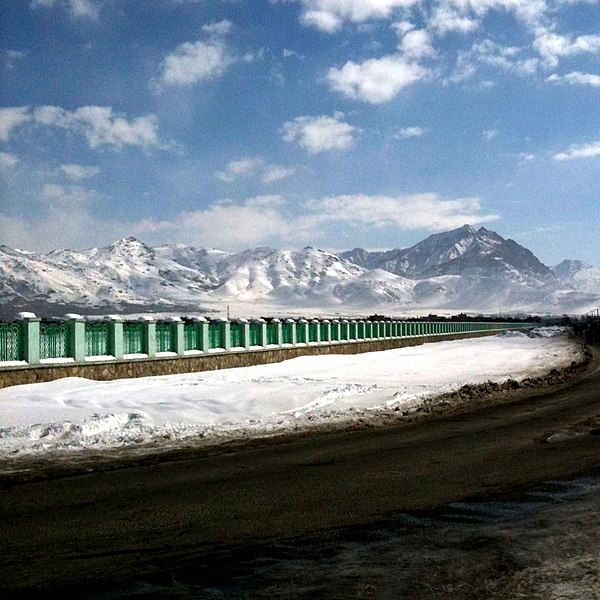
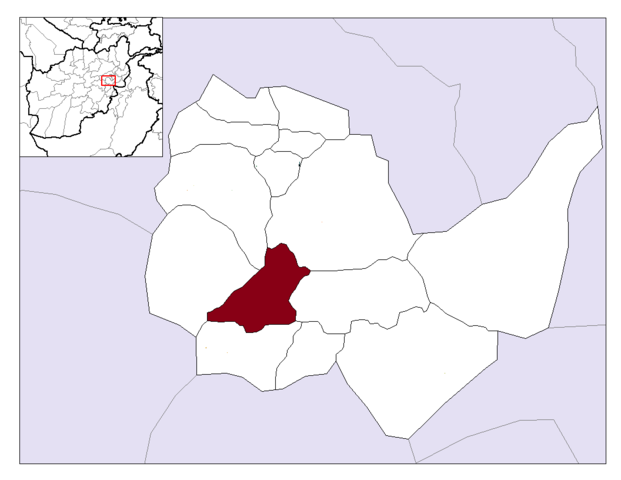
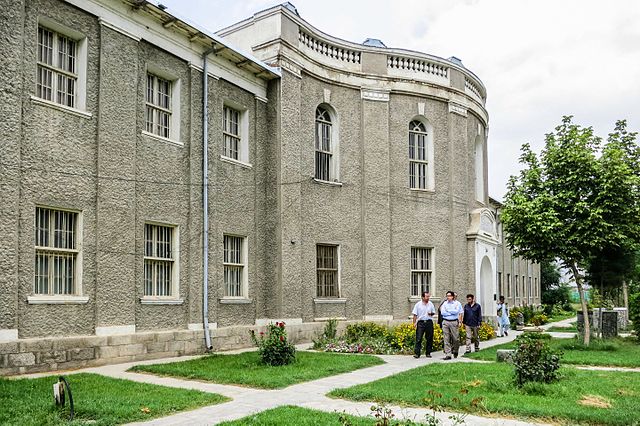
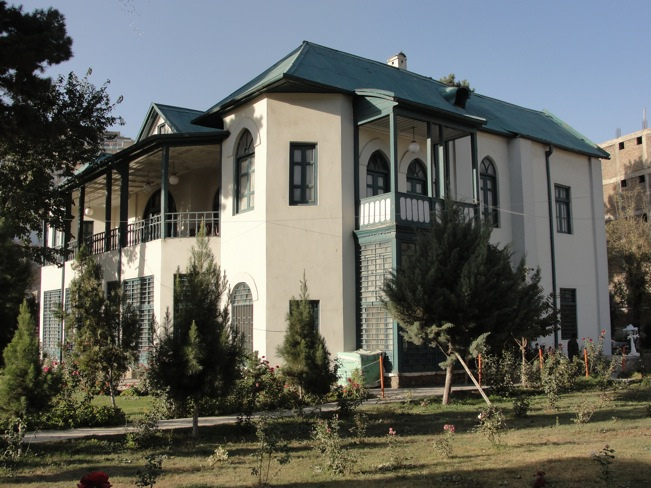
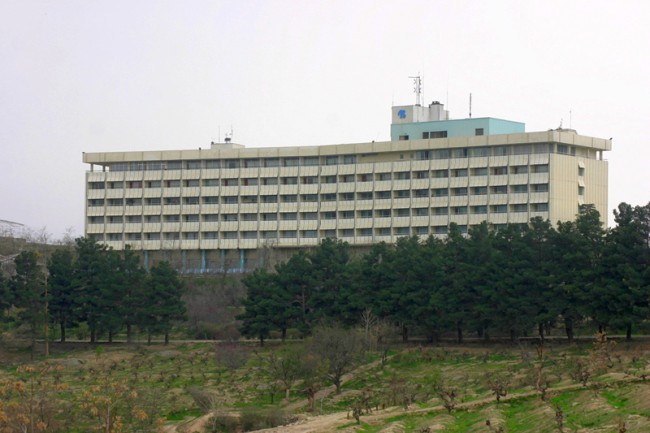
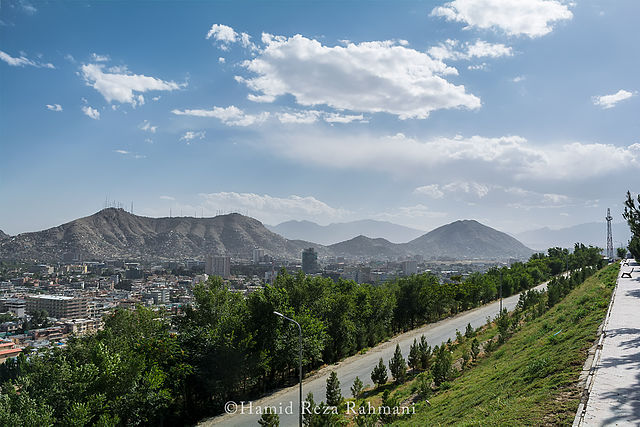
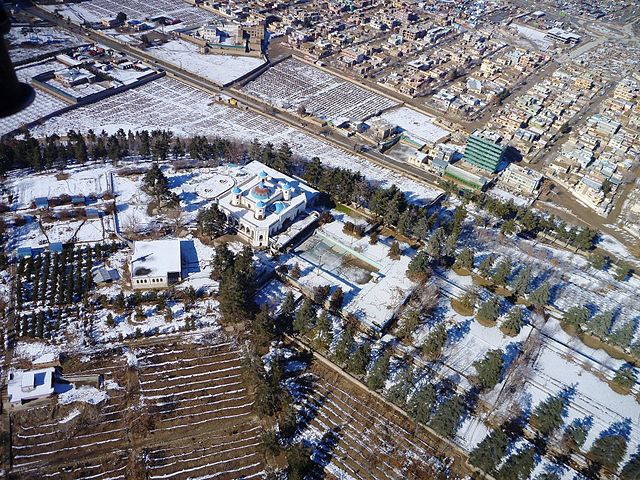
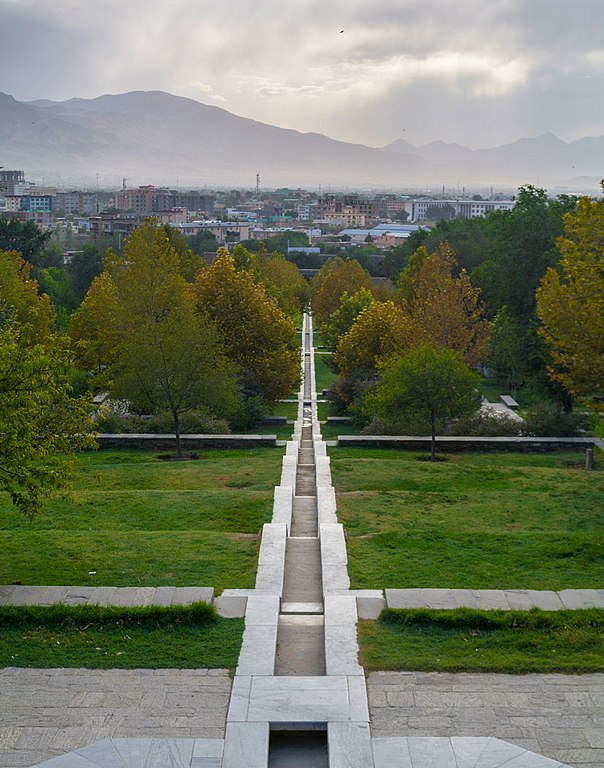

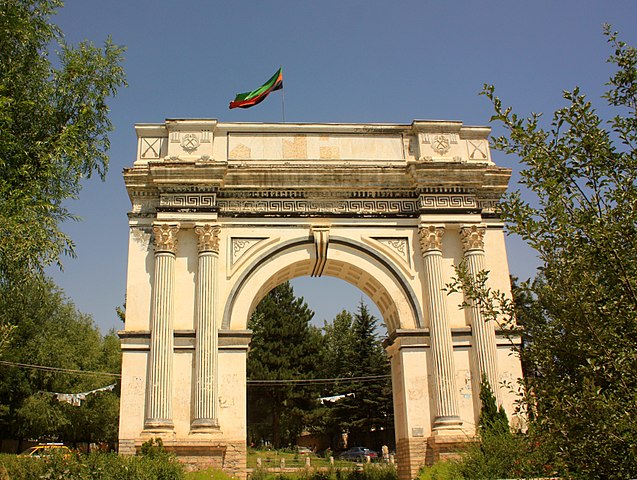

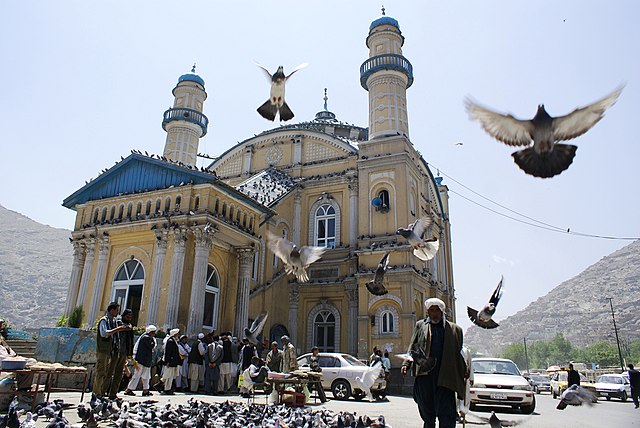
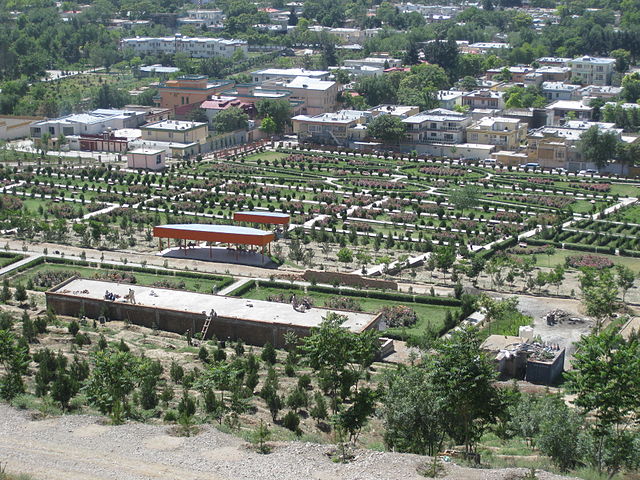

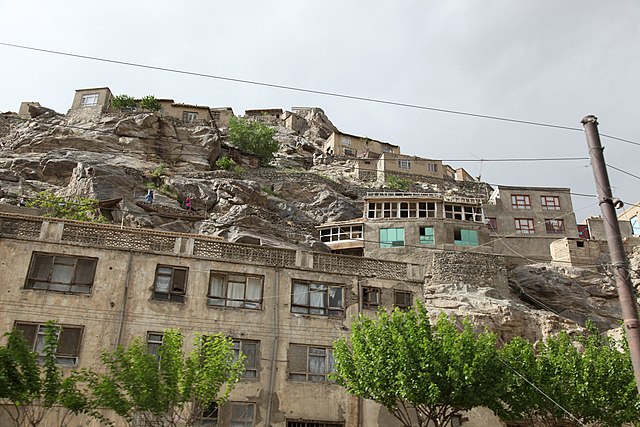
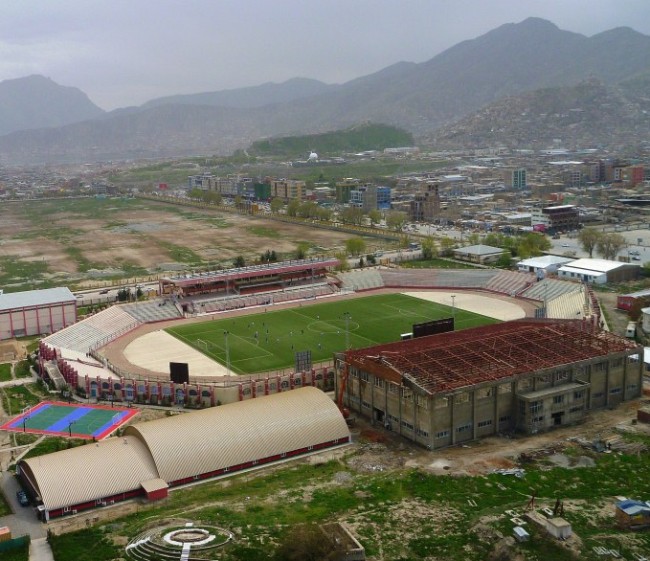
.jpg)
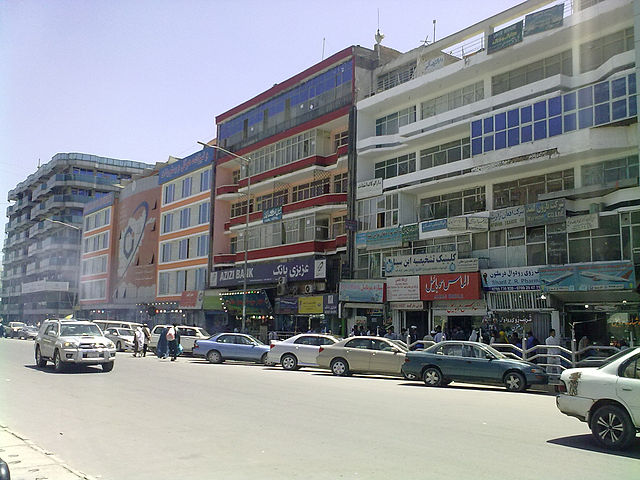
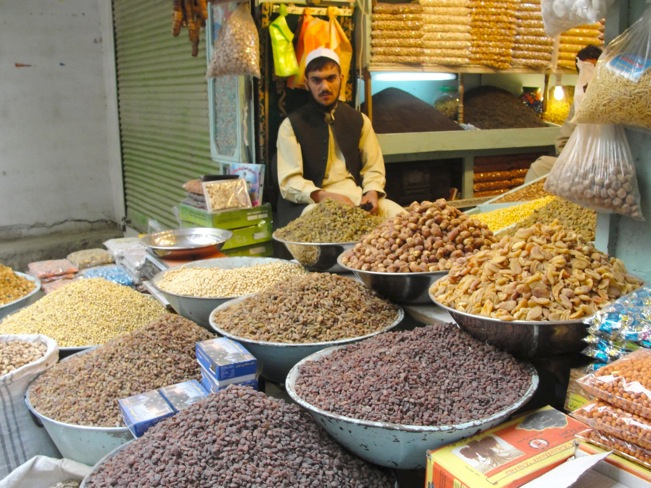
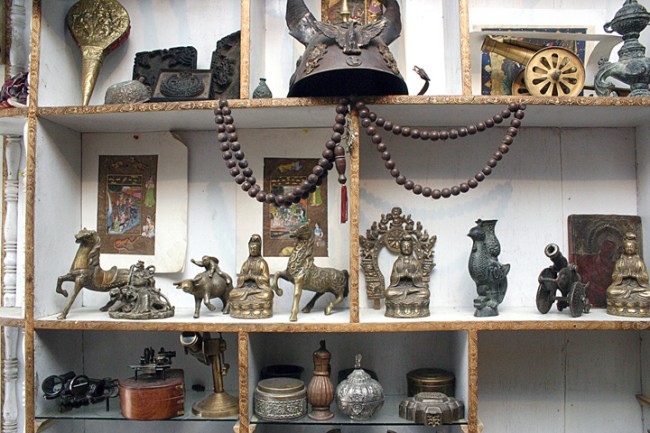
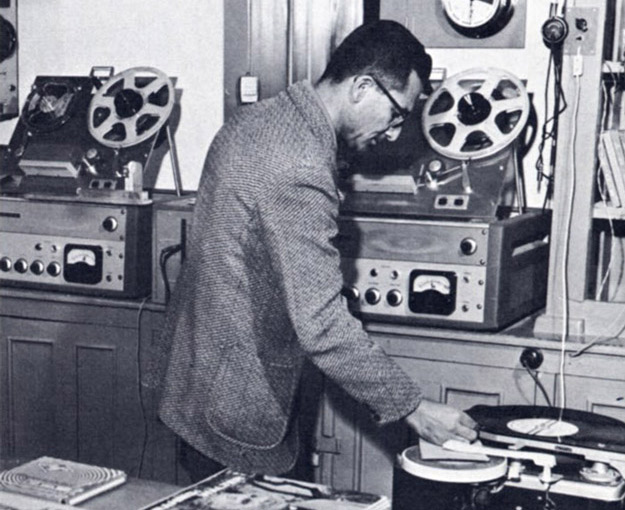
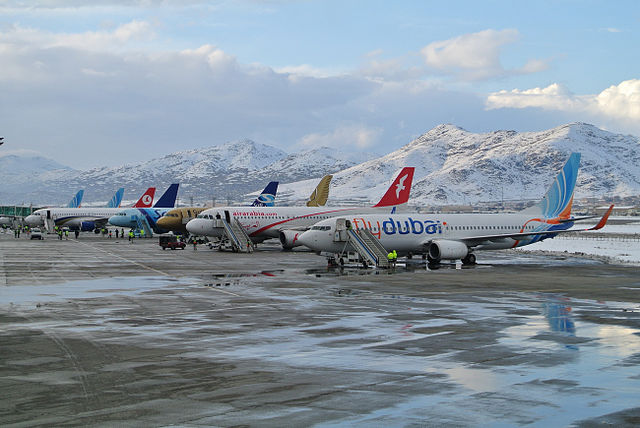
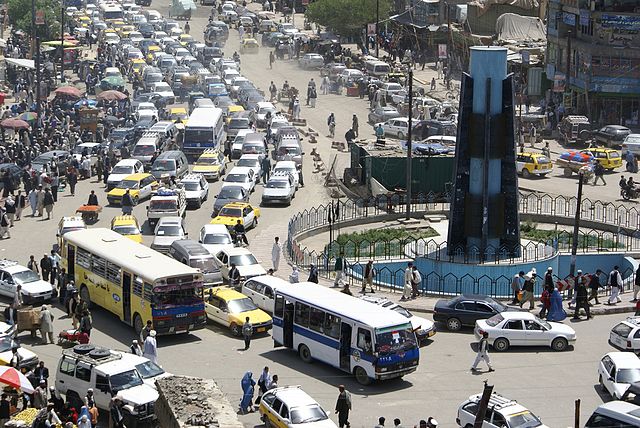
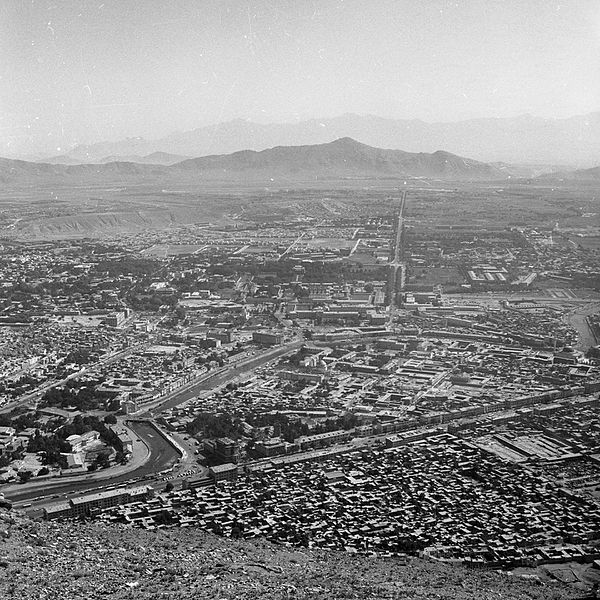
.jpg)
